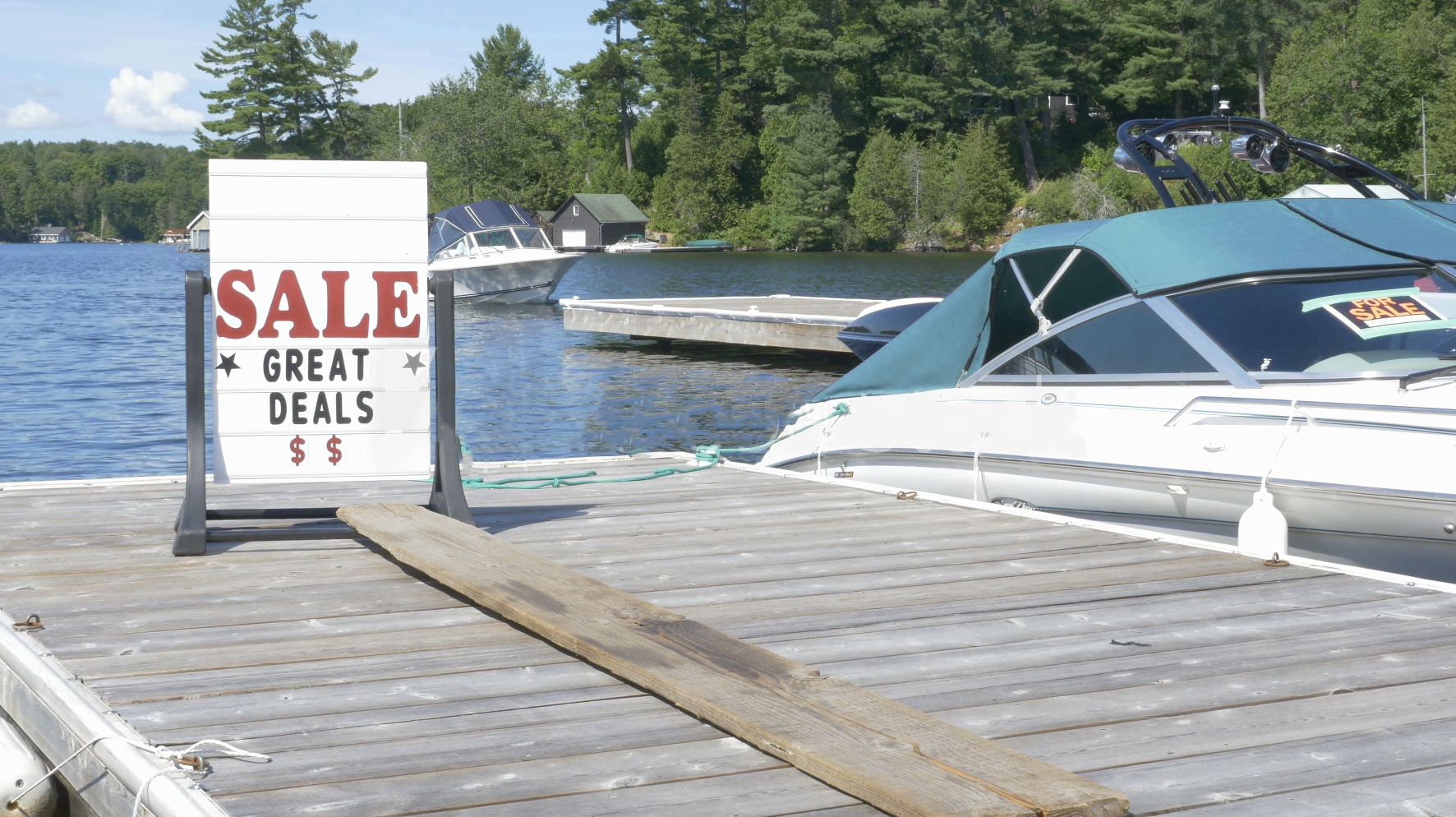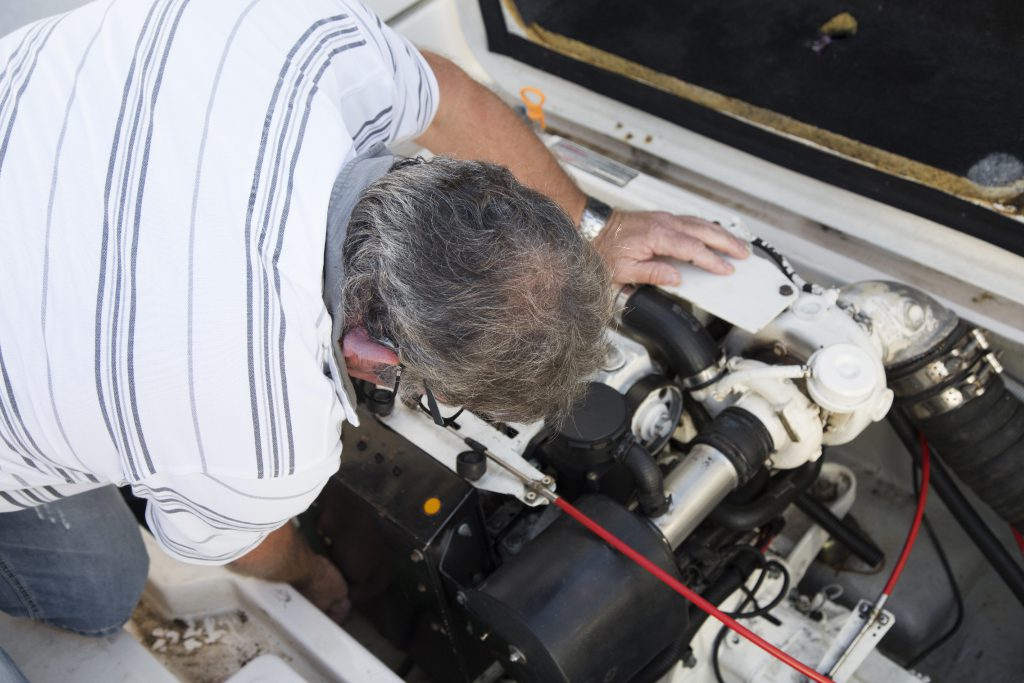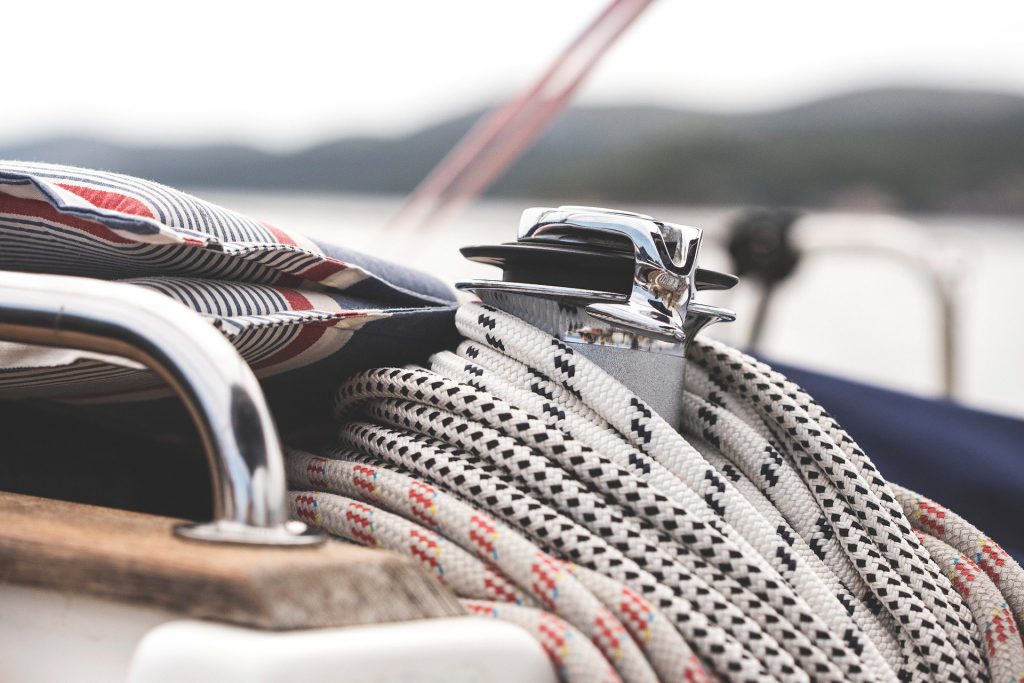Things to Check When Buying a Used Boat (Part Two)
September 4th, 2020 by team

by B.J. Porter (Contributing Editor)
Read Part I, Part III, and Part IV of buying a used boat.
Back in July we started a series on things to look for when buying a used boat.
We touched on a few easy checks you can make the first time you look at a boat. Some of them included:
- Smells and Odors
- Drips and Leaks
- Obvious Damage and Corrosion
Here are a few more pointers on what to look for when you view a boat you’re thinking of buying. When you’ve taken the time to see a boat, you want to do more than kick the tires and admire the shiny bits. None of this replaces a thorough, professional survey of your prospective boat, but it helps you in the pre-sale process to figure out if the boat you’re looking at is all she seems to be.
Walking the Decks

When you walk the deck of a boat, you’re looking for a few things that make the boat more desirable and you want to keep an eye out for potential problems. You’re looking for wear and tear and a general sense of how well laid out the deck is for sailing.
Is the Layout Good?
Look around the decks when you walk them and try to visualize how they are set up for sailing, and how you may use them. Do lines run fair? Are winch, cleat, line organizer, and clutch placements sensible? Can you figure out what lines are for what purpose? While it’s difficult to test a deck layout until you sail the boat, keep an eye out for clever ideas and good solutions or things that you may need to upgrade to make the boat easier to handle.
Flex and Delamination
On a first boat showing, you can’t run around with a hammer tapping every square inch on the deck looking for hollow noises and soft spots. Your surveyor will do that for you when it’s time. But you can walk around the deck feeling for give, flexing, or mushiness.
Put a little bounce in your step as you walk, coming down just a little harder than you normally would; it helps you feel flexing. And you can rap your knuckles in a few places at random, listening for a hollow sound that may show delamination. If you feel or hear something, check that area in detail out to see if you can estimate the size of the problem.
Look at Hardware Bedding
Is the deck hardware all well bedded? Does it look like it’s keeping out water or leaking? Check around the bases of stanchions and other hardware for stress cracking. A little stress cracking in the gel coat on an old boat isn’t abnormal, but you want to be on the lookout for deeper or more abundant cracks.
Teak Decks
Looking at a boat with teak decking, you’re looking for excessive wear. Check seams to see if caulk is raised and standing “proud” of the teak. This doesn’t mean a problem if there’s a little of it, but it may be a sign the teak is wearing and the caulk will need replacing soon. Check for missin teak bungs and look around the base of installed deck hardware. Unless it was removed and sanded, extra thickness under deck hardware will show the original thickness of the teak compared to what’s left now.
Look in the Engine Space

We already talked about leaks and drips in the engine spaces, but you also want to look for corrosion and wear. Some engine spaces are very simple, just an engine. But some will have everything from batteries, chargers, and water heaters to air conditioning compressors and water pumps. You want to look over the internal systems for:
- Leaks, drips and corrosion.
- Pooled or sprayed oil or fluids.
- Worn or chafed belts and hoses. These are replaceable, but you want to know why things are chafing.
- Look in the pan under the engine, just to be sure.
- Loose or corroded electrical connections.
One boat I rejected on survey had a leak in an engine intake hose that was dripping on an alternator. That simple leak at the siphon break destroyed two alternators and the mounting hardware. So a problem with one system can cause (or be caused by) another.
Check out the Rigging

Depending on the age of the standing rigging, you may want to hire a professional rigger to check it as part of your pre-sale survey. Many surveyors won’t climb the rig to look for problems unless you agree to it ahead of time.
Standing Rigging
When you’re on the deck, pay close attention to the wire or rod holding the mast up. Look at the swaged fittings and turnbuckles for any signs of rust, pitting, corrosion or cracking. Many hairline cracks won’t be visible to the naked eye, but when you look over the deck, you may see something obvious.
Also check for wear, chafing, corrosion or breakage in the rigging. You can’t see much from the deck, but if what’s at eye level is in rough shape, the whole thing bears a closer look.
Running Rigging
If the running rigging is on the boat, ask about its age and composition. Look at lines for any obvious chafing or wear points and check the ends to see that whipping and splicing is holding. Look for mildew or mold on lines. While mildew on a line may not harm it, it should cleaned.
It’s a safe assumption you must replace most running rigging in your first few seasons with the boat, but it’s nice to know you’ve got enough to run the boat when you buy it.
The Next Time
While there’s nothing in these articles that should cause you to reject a boat outright, you’re looking for red flags and assurances. A clean engine room and shiny rigging tells you something about the boat in the same way a puddle of oil does.
Next month we’ll get into checking out household and comfort systems, electrical wiring and batteries, and instruments.
- Posted in Blog, Boating Tips, Cruising, iNavX, iNavX: How To, Navigation, Reviews, Sailing, Sailing Tips
- 2 Comments
- Tags: Boat, boat buying guide, Boating, Boating Tips, buying a boat, iNavX, Sailboat, Sailing


December 17, 2020 at 10:23 pm, Things to Check When Buying a Used Boat (Part 1) | iNavX said:
[…] Part II, Part III, and Part IV of buying a used […]
August 29, 2022 at 5:33 pm, Boat Detailing said:
Nice tips you have here about second-hand boat buying. A lot of important things were covered, too. Love reading this.